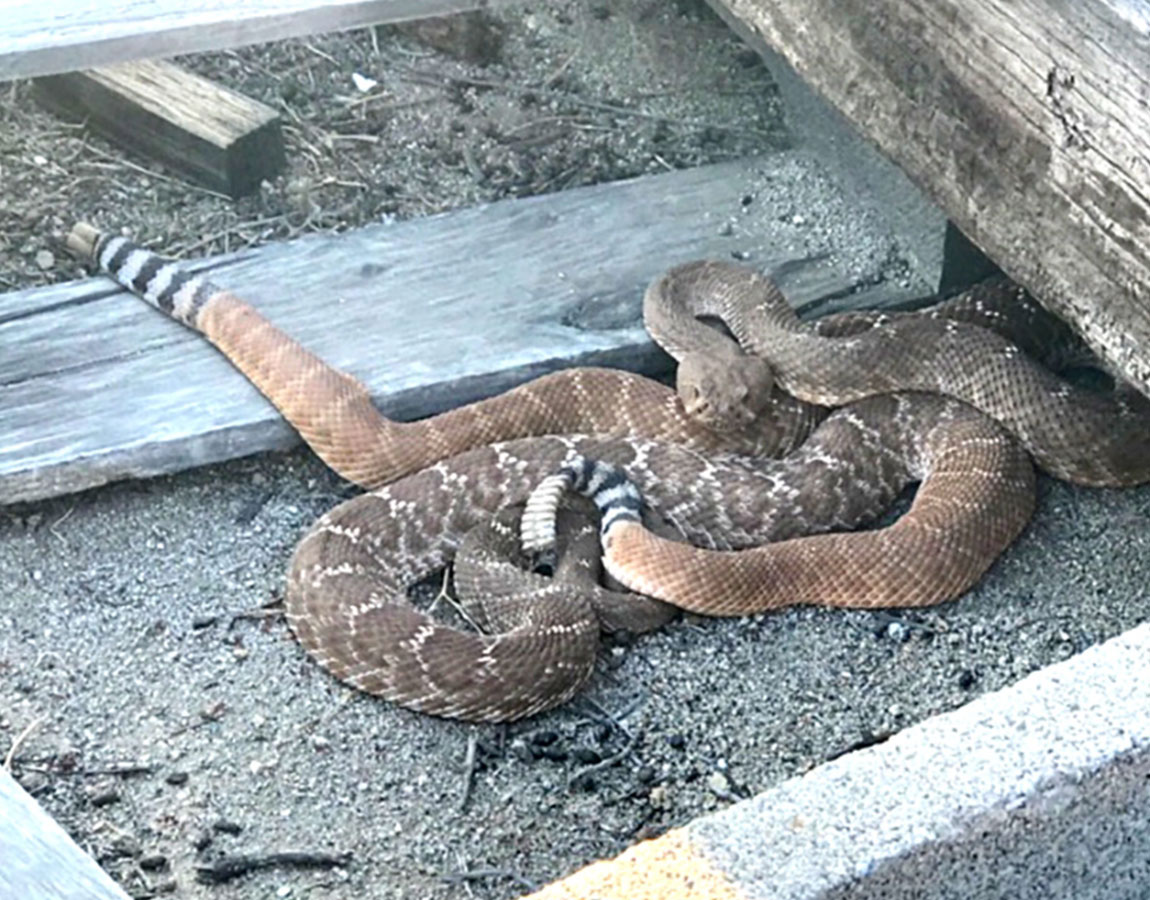Animal Control Officers Will Remove and Locate
Higher temperatures have resulted in several more calls about rattlesnake sightings, according to an informal survey with Riverside County Animal Services’ officers and the dispatch center.
Although an official number of calls from the public is not immediately available, officers have already responded to some recent calls. Last week, one property owner in the Cabazon area had three rattlesnakes at their home.
Officers Tiffany Fuller and Cecelia Morris responded to an evening call in the Lake Mathews area on Wednesday where a homeowner was dealing with not one – but two rattlesnakes.
The officers responded at about 6 p.m. to the property, located along Lounsberry Road, south of Cajalco Road. The officers removed and relocated the red diamond rattlesnakes to a remote location in their natural habitat.
Officers working in the Coachella Valley area responded to two rattlesnake calls this week, reported Lt. Luis Rosa, who supervises the officers at the Coachella Valley Animal Campus. One of the calls was in the city of Indio and the other was in Cathedral City.
The rattlesnake at the Indio property was safely removed and relocated, Lt. Rosa said.
With warmer weather right around the corner, many species of snakes will be coming out of their burrows, and even though most are harmless, it is important for Californians to be able to identify a venomous rattlesnake. A rattlesnake bite has the potential to cause severe injury, and possibly death, so taking precautions will help reduce the risk of being bitten.
The California Department of Fish and Wildlife (CDFW) offers the following dos and don’ts:
Be alert. Like all reptiles, rattlesnakes are sensitive to the ambient temperature and will adjust their behavior accordingly. After a cold or cool night, they will attempt to raise their body temperature by basking in the sun midmorning. To prevent overheating during hot days of spring and summer, they will become more active at dawn, dusk or night.
Wear sturdy boots and loose-fitting long pants. Never go barefoot or wear sandals when walking through brushy, wild areas. Startled rattlesnakes may not rattle before striking defensively.
When hiking, stick to well-used trails. Avoid tall grass, weeds and heavy underbrush where snakes may hide during the day.
Do not step or put your hands where you cannot see. Step ON logs and rocks, never over them, and be especially careful when climbing rocks or gathering firewood. Check out stumps or logs before sitting down, and shake out sleeping bags before use.
Never grab “sticks” or “branches” while swimming in lakes and rivers. Rattlesnakes can swim.
Be careful when stepping over doorsteps as well. Snakes like to crawl along the edge of buildings where they are protected on one side.
Never hike alone. Always have someone with you who can assist in an emergency.
Do not handle a freshly killed snake, as it can still inject venom.
Teach children early to respect snakes and to leave them alone.
Leash your dog when hiking in snake country. Dogs are at increased risk of being bitten due to holding their nose to the ground while investigating the outdoors. Speak to your veterinarian about canine rattlesnake vaccines and what to do if your pet is bitten.
For more safety information, please visit: https://www.wildlife.ca.gov/news/snake
For more information about native rattlesnakes, please visit: http://www.californiaherps.com/identification/snakesid/rattlesnakes.html







